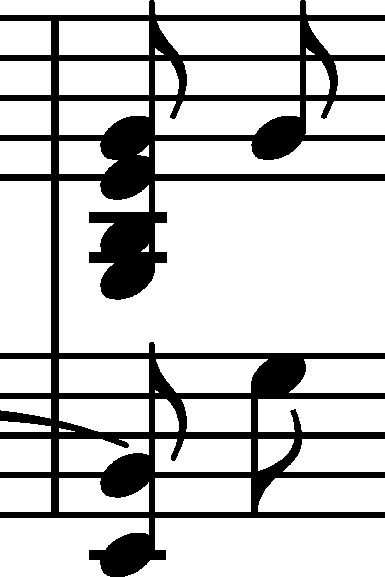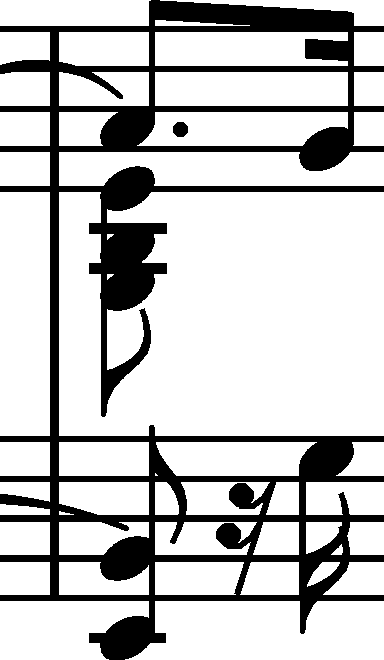



|
b. 202
|
composition: Op. 22, Polonaise
..
In the main text we add an f quaver (tied) on the 3rd beat of the bar, by analogy to b. 20 and 164. category imprint: Editorial revisions |
|||||
|
b. 202-213
|
composition: Op. 22, Polonaise
..
From b. 186 to b. 219, the text of FE, encompassing pp. 17-18, is identical to b. 42-75 (pp. 9-10), since it was only two plates that were used to print these four pages in FE, out of which each was provided with double pagination. category imprint: Source & stylistic information |
|||||
|
b. 202
|
composition: Op. 44, Polonaise in F♯ minor
..
The corrections visible in AImaz reveal that not only did Chopin change the pitch of the top note of the 1st chord, but also the rhythm of the 1st beat of the bar. The starting point were 2 g category imprint: Corrections & alterations; Source & stylistic information issues: Dotted or even rhythm |
|||||
|
b. 202-204
|
composition: Op. 23, Ballade in G minor
..
In A we can see the deleted initial version of the first two chords in the bottom L.H. voice, i.e. g-b category imprint: Corrections & alterations; Source & stylistic information issues: Corrections in A , Deletions in A , Accompaniment changes |
|||||
|
b. 202
|
composition: Op. 49, Fantaisie in F minor
..
The augmentation dot to F category imprint: Differences between sources issues: Errors in FE , Errors in GE |


 1 quavers, not beamed:
1 quavers, not beamed:  . Chopin then added semiquaver rests and shortened the second quaver:
. Chopin then added semiquaver rests and shortened the second quaver:  . Eventually, the change of the pitch of the top note of the chord brought further changes to the notation, including the abandonment of the rest in the R.H. part:
. Eventually, the change of the pitch of the top note of the chord brought further changes to the notation, including the abandonment of the rest in the R.H. part:  .
. -c
-c